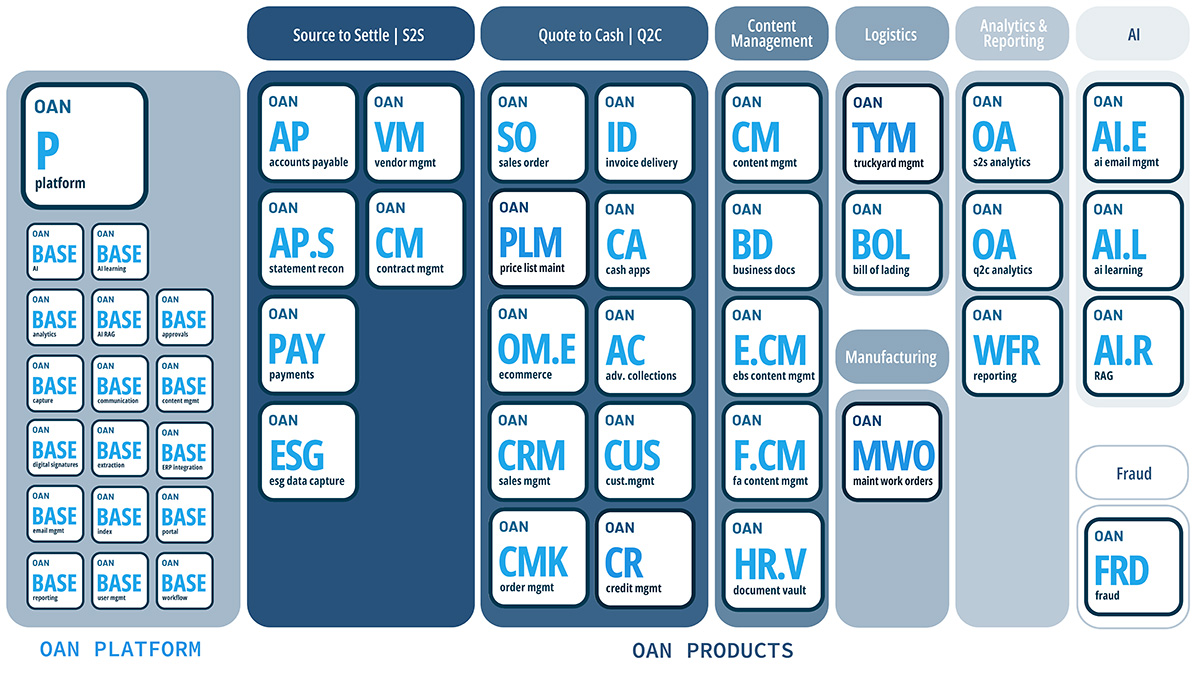Accounts Payable (AP) departments are no strangers to complexity. Between juggling purchase orders, invoices, vendor agreements, and payment terms, it’s too easy for costly errors to slip through the cracks. Overpayments—whether due to simple clerical mistakes or systemic process issues—can quietly erode your company’s bottom line.
At oAppsNET, we help companies eliminate these vulnerabilities through intelligent digital transformation and automation. But you need to know where the leaks are before you can optimize. Below are some of the most common AP overpayment examples—and what you can do to stop them.
1. Cost Overcharges
One of the most frequent culprits of financial leakage in AP audits is cost overcharges—when you pay more than the agreed-upon price for goods or services. This can stem from a mismatch between the purchase order, invoice, or cost table, and it’s hazardous because the error often goes unnoticed until a formal audit is conducted.
Example:
A retail company issues a PO for 1,000 units at $50 each. The invoice comes in at $52 per unit, and without a line-by-line match check, the AP team processes it—overpaying by $2,000.
How to Fix It:
Implement a three-way match process between POs, goods receipts, and invoices. Ensure that cost tables are regularly updated and embedded into your AP software.
2. Missed Term Discounts
Cash and term discounts are vendor incentives for early payment. Failing to take advantage of these opportunities doesn’t just represent missed savings—it’s money left on the table.
Example:
Your vendor offers “2/10 net 30” terms on a $100,000 invoice—a 2% discount if paid within 10 days. If the AP team pays on day 11, you’ve effectively wasted $2,000.
How to Fix It:
Use automated alerts and dashboards that flag invoices nearing their discount deadlines. Prioritize processing these payments to capture every available discount.
3. Duplicate or Erroneous Payments
Errors like duplicate entries, fat finger mistakes, and number transposition can result in AP teams paying the same invoice twice or the wrong amount altogether. In high-volume environments, even minor percentage errors can snowball into six-figure losses.
Example:
An invoice for $4,500 is mistakenly paid as $45,000 due to a fat-finger error. The discrepancy isn’t caught without a validation system until the subsequent monthly reconciliation.
How to Fix It:
Automate your AP processes using validation rules and exception reports. Introduce approval workflows that require a second set of eyes for payments over a certain threshold.

4. Invoice vs. Price Sheet Discrepancies
When vendors invoice at rates that don’t match their official price sheets, and those discrepancies aren’t verified, overpayments become inevitable.
Example:
A pharmaceutical company agrees to $15 per unit in writing. The vendor invoices $18 per unit, and the AP department processes the payment without validating it against the price sheet.
How to Fix It:
Maintain a centralized price sheet repository and integrate it with your invoice processing system. Train staff to conduct spot checks regularly or use software that automatically flags inconsistencies.
5. Vendor Master File Issues
Duplicate vendor records or similar-sounding names in your ERP system can result in paying the same invoice twice or sending payments to the wrong entity.
Example:
Your system contains “ABC Supply Inc.” and “ABC Suppliers LLC” as separate vendors. An invoice intended for the former is paid to the latter, and both payments are processed.
How to Fix It:
Perform routine audits of your vendor master file. Merge duplicates and enforce strict naming conventions—leverage AI tools to detect similarities in vendor entries before approvals.

6. Proof of Delivery Missteps
Relying on proof of delivery (POD) alone—without verifying invoice accuracy—can lead to overpayment, primarily when product quantities or unit prices differ.
Example:
A manufacturing company receives machinery and pays $50,000 based on POD. Later, they discovered that the correct invoice was only $48,000. The difference must be recovered manually.
How to Fix It:
Enforce a policy that payments are only released after a full invoice-to-delivery match is completed. Automate this process using AP software that pulls data from both systems.
7. Payments on Cancelled Invoices
When communication gaps exist between purchasing, receiving, and AP, it’s not uncommon for canceled invoices to get processed anyway.
Example:
A $60,000 order is canceled but never removed from the system. AP pays the invoice weeks later, requiring legal intervention to claw the money back.
How to Fix It:
Connect your AP system with procurement to automatically flag canceled orders. Conduct pre-payment audits to catch and halt questionable transactions.
8. Statement Audit Errors
Vendors may issue unnoticed credits or adjustments unless you’re actively auditing their statements.
Example:
A vendor provides a $5,000 credit after a return, but it’s not recorded in your system. A statement audit months later is the only reason you catch it.
How to Fix It:
Conduct regular statement audits and reconcile vendor statements with internal records. Use reconciliation software to catch these discrepancies in real time.
Stop the Bleeding—Digitally
These AP overpayment examples demonstrate how fragile a manual or siloed process can be. The good news is that every scenario we’ve outlined has a solution—and at oAppsNET, we specialize in implementing those solutions.
As an Oracle-certified partner with over 25 years of experience in AP automation and ERP optimization, we know how to plug the gaps before they drain your profits. From three-way match integrations to automated discount tracking, our tools transform error-prone systems into lean, intelligent machines.
Ready to stop overpaying and start optimizing? Let’s transform your AP department—smarter, faster, and stronger.

